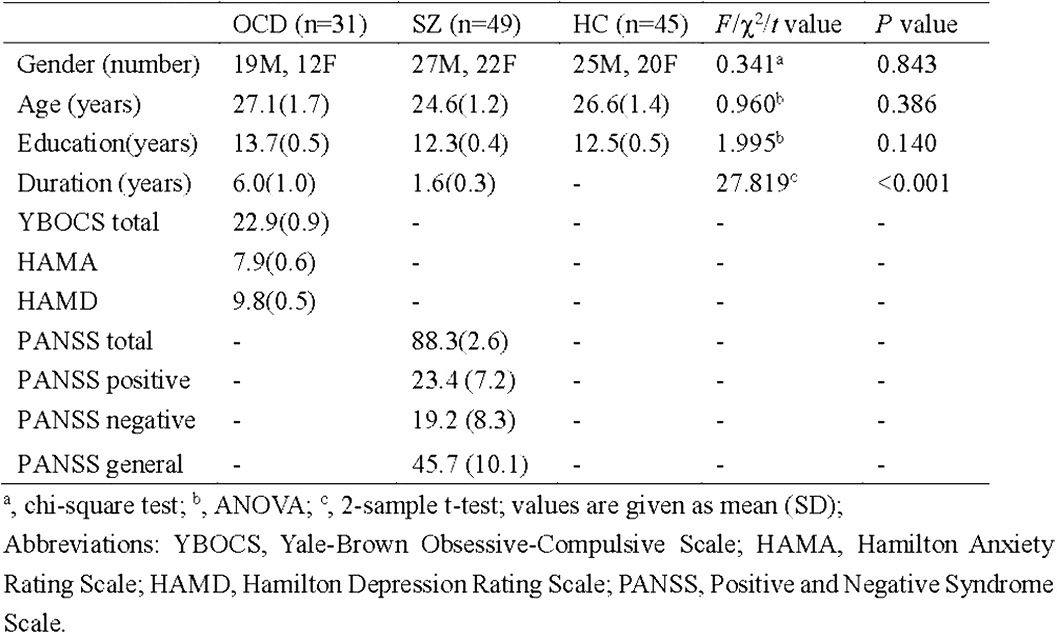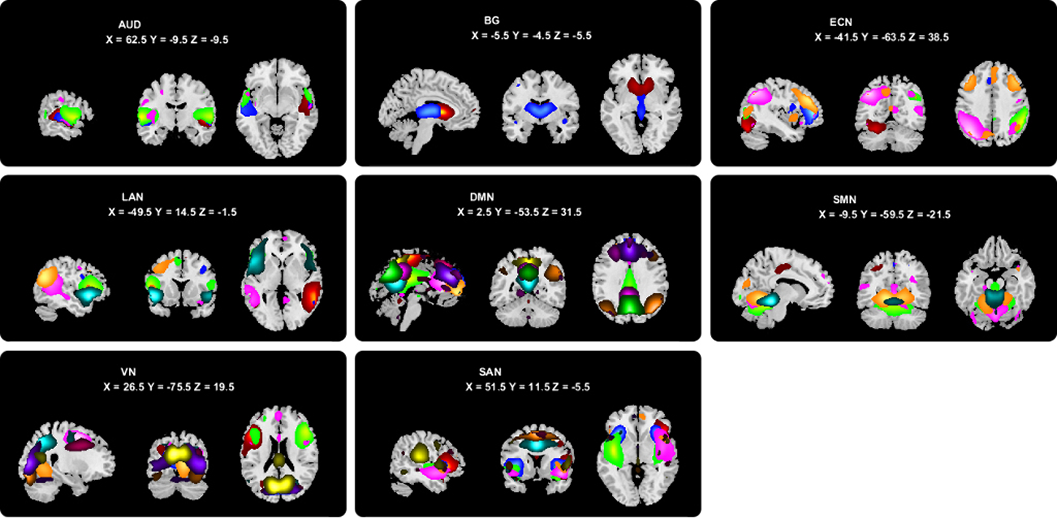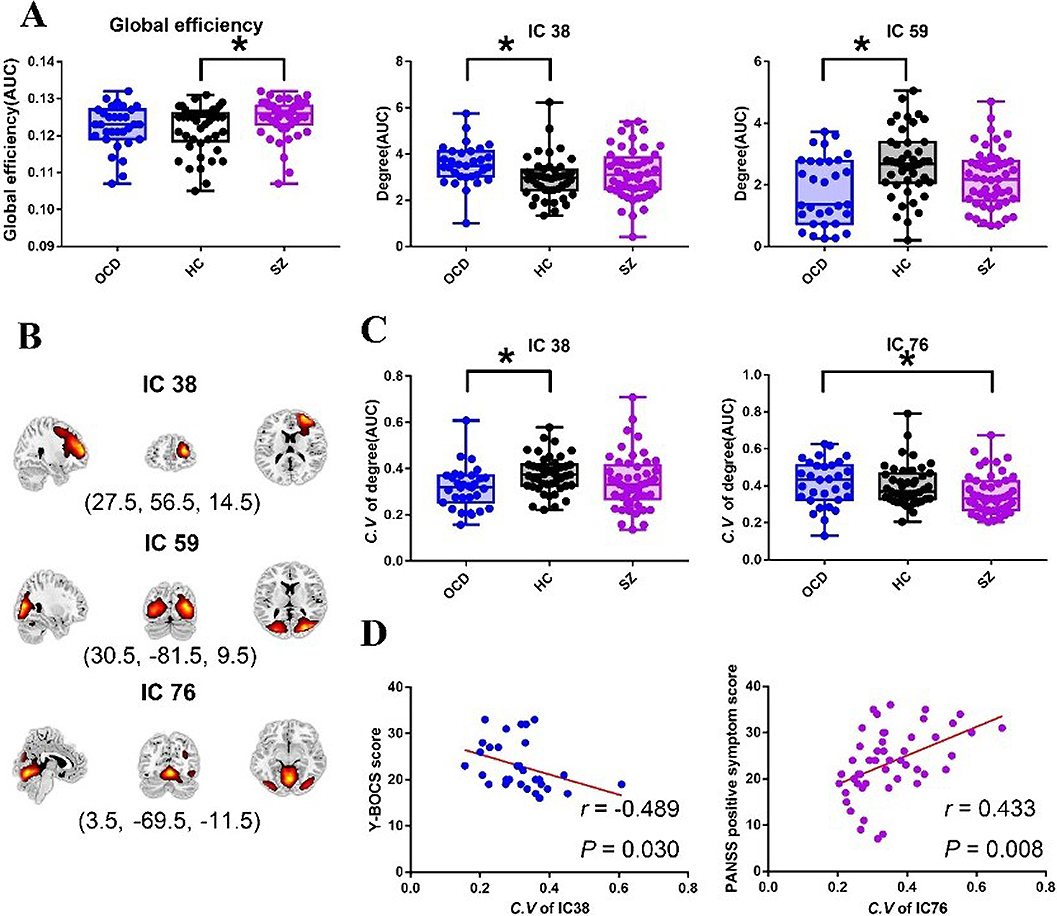No CrossRef data available.
Article contents
Different alternations of static and dynamic brain regional topological metrics in schizophrenia and obsessive-compulsive disorder
Published online by Cambridge University Press: 13 August 2021
Abstract
Though schizophrenia (SZ) and obsessive-compulsive disorder (OCD) are conceptualized as distinct clinical entities, they do have notable symptom overlap and a tight association. Graph-theoretical analysis of the brain connectome provides more indicators to describe the functional organization of the brain, which may help us understand the shared and disorder-specific neural basis of the two disorders.
To explore the static and dynamic topological organization of OCD and SZ as well as the relationship between topological metrics and clinical variables.
Resting state functional magnetic resonance imaging data of 31 OCD patients, 49 SZ patients, and 45 healthy controls (HC) were involved in this study (Table 1). Using independent component analysis to obtain independent components (ICs) (Figure 1), which were defined as nodes for static and dynamic topological analysis.

Static analysis showed the global efficiency of SZ was higher than HC. For nodal degree centrality, OCD exhibited decreased degree centrality in IC59 (located in visiual network) (P = 0.03) and increased degree centrality in IC38 (located in salience network) (P = 0.002) compared with HC. Dynamic analysis showed OCD exhibited decreased dynamics of degree centrality in IC38 (P = 0.003) compared with HC, which showed a negative correlation with clinical scores in OCD. While SZ showed decreased dynamics of degree centrality in IC76 (located in sensory motor network) compared with OCD (P=0.009), which showed a positive correlation with clinical scores in SZ (Figure 2).
These changes are suggestive of disorder-specific alternation of static and dynamic brain topological organization in OCD and SZ.
- Type
- Abstract
- Information
- European Psychiatry , Volume 64 , Special Issue S1: Abstracts of the 29th European Congress of Psychiatry , April 2021 , pp. S522 - S523
- Creative Commons
- This is an Open Access article, distributed under the terms of the Creative Commons Attribution licence (http://creativecommons.org/licenses/by/4.0/), which permits unrestricted re-use, distribution, and reproduction in any medium, provided the original work is properly cited.
- Copyright
- © The Author(s), 2021. Published by Cambridge University Press on behalf of the European Psychiatric Association





Comments
No Comments have been published for this article.